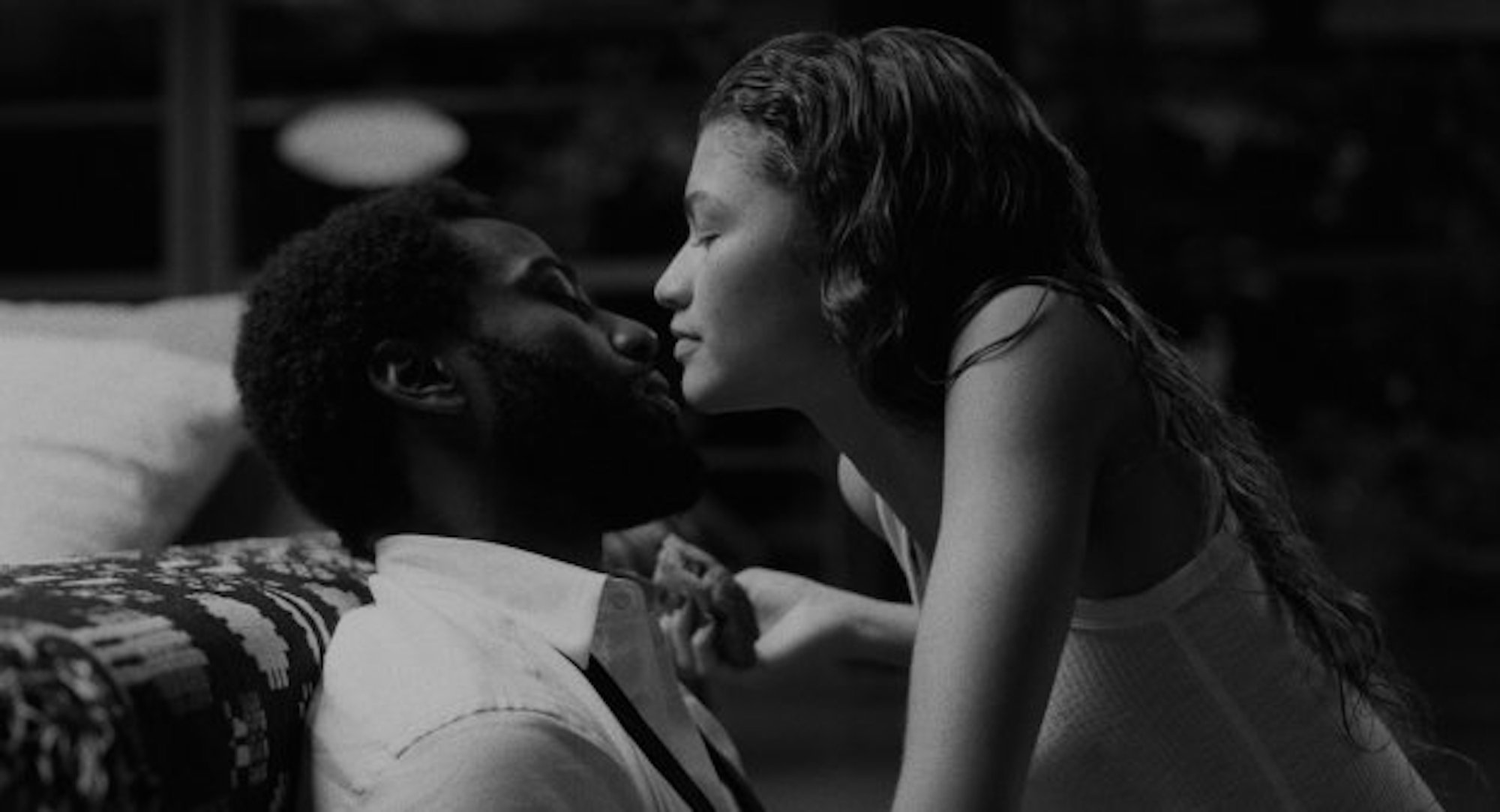Since Hollywood came to a standstill on March 20, the coronavirus pandemic has completely upended the way television and movies are made. According to an astounding report from the LA Times, this year had the least amount of filmmaking in California’s history, down 98% from over the same period in 2019.
Yet despite these figures, news broke last Wednesday that the first film to be made during the pandemic was completed, shot in secret over the course of 16 days. Starring Zendaya opposite BlacKKKlansman Golden-Globe nominee John David Washington, the project Malcolm & Marie bears some similarities to Netflix’s Marriage Story, and reportedly delves into a “number of social themes that the world is experiencing right now.”
The film’s inception came about via a quarantine phone call from actress Zendaya to Sam Levinson, the creator of their show Euphoria. They’d just heard from HBO that the second season of Euphoria was indefinitely paused (like essentially every TV show across the world). But this didn’t discourage the pair from discussing how they could create a new project together, despite the vast amount of restrictions filming would entail — and within six days, against all odds, Levinson wrote a script.
Malcolm & Marie was quickly funded by various producers, including Zendaya, Washington, rapper Kid Cudi and Levinson and his wife. The remarkable Hungarian cinematographer Marcell Rév — who’s behind the lens of Euphoria and Levinson’s Assasination Nation — also joined the film alongside production designer Michael Grasley, an alum of those same projects.
“So the girls have found out about Malcolm & Marie,” Jeremy O. Harris tweeted on Wednesday night, the playwright and Euphoria consultant being apparently one of the few who’d been in the know. “Excited for the world to meet @Zendaya the 60s film star. And JDW, a modern Brando.” The accompanying black-and-white first still seems to corroborate his description’s promise.
The project followed all government and guild-issued guidelines by confining production to a single location: the Caterpillar House in Carmel Valley, California. A sun-filled, eco-conscious home designed by Feldman Architecture. During the shoot, no one was allowed to leave the 33-acre property, and every step was carefully choreographed to ensure safety for all involved (a chef was even quarantined with the cast and crew).
Malcolm & Marie is an early example of total, brilliant innovation during a time of crisis. Yet this project is clearly extremely unique, with a story involving so few characters, and a ‘pandemic-friendly’ film set. With currently no vaccine in sight, how does this industry — and the vast amount of small businesses and middle-class workers who depend on it — continue on in the months ahead? How far can innovation go?
A recent VICE article delves into these questions, and punctures holes in several possibilities for the ways Hollywood can get back to work. Notably, even if all cast and crew get tested for Covid-19 each day of a shoot, there is still a 67 percent chance you could be falsely negative if you’d recently contracted the virus.
To learn more about coronavirus’ impact on the industry, I spoke with Janet Grillo, a New York University film school professor and acclaimed filmmaker. While there is certainly a possibility of more one-location films like Malcolm & Marie being made in the coming months, she wonders: “How many stories can get told that way? What will the appetite be for them?”
“The good news is that a lot of pitch meetings are taking place right now, and there’s a true and tremendous interest in developing diverse stories,” Professor Grillo tells me. But even if major studio films do hopefully become more diverse, independent and young voices will still face difficulty being heard in this climate, maybe more so now than ever.
“How would a low-budget indie like Moonlight get financed today?” She runs it down for me: “It had a $1 or $1.3 million budget, but with increased costs to cover Covid-19 protocols, that could balloon to, let’s say, $1.5 to $1.7 million — which might kick it into a higher union tier level, increasing costs again. A film like that, with an emerging filmmaker, tough subject matter and at that time, no bankable stars — where is the market value to justify the increased spend? The film was a breakthrough in festivals, which sparked its success — but now festivals are all online. It’s not the same kind of momentum.”
As hospitalizations increase in the LA area, Grillo explains, legislation is being proposed to provide a financial backstop for reinsurance companies. “That’s critical, because indie films require insurance and can’t currently get it.” While deep-pocketed and CGI-assisted blockbusters can self-insure and absorb 20-30% of the expected budget increases, what about everyone else?
“Creative problem solving leads, historically, to genius,” Grillo adds. Storytelling is all about being passionate, recklessly creating something out of nothing — just now there’s a pandemic, and an economic crisis, hanging over this metaphorical nothing. And not every project is going to come together as seemingly successfully as Malcolm & Marie.”
“We’ll get to the other side,” she says, optimistically. “There could just be a lot of hardship before we get there.”

